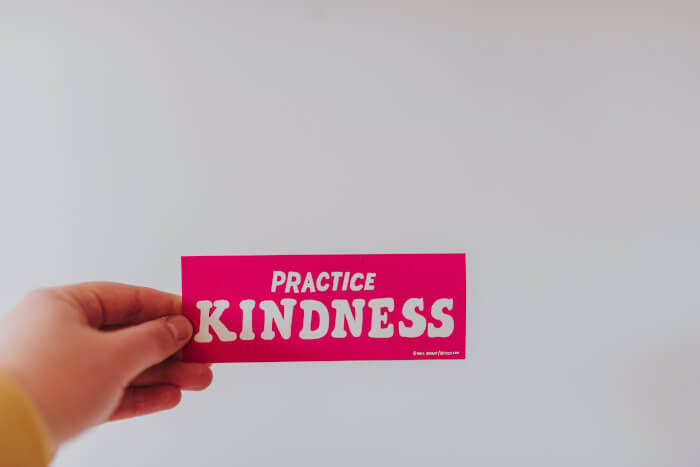If you’ve been working in education for a while, you’re probably familiar with Positive Behavioral Interventions and Supports (PBIS). This innovative method has definitely made its mark on schools across North America. States, districts, and schools have made PBIS a requirement to try and improve student behaviors and, ultimately, improve academic results. Schools now use PBIS to reduce discipline referrals, communicate with students, and much more.
But, what does PBIS really look like in the classroom? And what kind of PBIS strategies can you use in your school to make it work? You’re about to find out.
First, let’s talk about PCBS
Before we get into PBIS strategies, we want to introduce you to Positive Classroom Behavior Support (PCBS). This is simply a way of using the critical features of PBIS — practices, systems and data — to create better outcomes in the classroom. Here’s what it looks like:
- Practices are what teachers do to prevent negative behaviors and encourage positive behaviors. These practices also include how we respond to different behaviors in the classroom.
- Systems are the supports that are provided by the district and the administrators to help teachers implement PCBS.
- Data is the information the teacher collects and uses to shape decisions in the classroom. Using evidence based on data, teachers can determine what’s working and what needs to be modified.
8 PBIS strategies you can use in your classroom
PBIS is designed to help educators design a new teaching environment by developing new classroom routines and improving expectations in the classroom. You’ll notice less disruption, more instruction and a marked improvement in student behavior and academic success.
Here are some PBIS practices that are commonly observed in classrooms:
1. Thoughtfully designing the classroom environment
When using PBIS practices to design a classroom, teachers have a lot to keep in mind.
- A learning environment should be flexible enough to support various classroom activities (small groups, whole groups, individualized support, learning centers, etc.)
- Teachers and students should be able to move around freely in the classroom
- Materials should be organized and teachers should ensure the students have access to helpful resources (posters with math formulas, a word wall, etc.)
- Teachers should provide assigned seating and areas to help students stay focused during learning activities.
- It’s important that all students be seen and have a place for their belongings.Examples of this might include having tables set up for lab activities in the classroom, using desks for individual work time, facing the seats forward for whole group instruction, or arranging the students in a circle for a discussion.
2. Developing and teaching classroom routines
Highly effective classrooms have highly effective routines. Teachers need to establish, teach, and practice these routines so students can spend more time learning and less time on activity transitions. Good classrooms have routines in place for how to turn in work, how to pass out materials, and how to make up for missed work.Teachers often have an arrival and dismissal routine so students know how to start and end the day without disrupting the learning process. Teachers also have a routine for transitioning from one activity to the next. Through PBIS, students learn how and when to ask for help in a positive school setting. They also learn what to do when they’ve finished their assignments. For example, you can provide an extra activity for the students such as a reading corner or a Chromebook for individual learning time.

3. Posting, defining, and teaching classroom expectations
School-wide PBIS expectations ensure that the entire building — not just one classroom — is posting, defining, and reinforcing expectations for students. If not, then each teacher will need to create three to five clear classroom expectations that are positively stated (e.g., “Keep hands and feet to yourself” rather than “Don’t touch others.”). Teachers need to explicitly teach these expectations using examples and opportunities for students to practice.
In the classroom, these expectations need to be clearly posted on the walls. Each expectation should be well defined: “Being responsible means turning in my work on time to the proper shelf and then quietly returning to my seat.” In an effective PBIS classroom, teachers refer to these examples when they interact with students. These expectations help develop a language that’s used to talk about behavior in the classroom.
4. Using active supervision and proximity
Teachers have to constantly be on their toes — they should be moving around the classroom and interacting with individual students. You can use this time to provide quality feedback to students. While teaching, you can do a visual sweep of the classroom to check for student behavior and understanding.
When this takes place in the classroom, you’ll notice that teachers are:
- Talking to their students and soliciting feedback (e.g., “How are you doing on question two?”)
- Moving around and standing near students as they work
- Overseeing transitions between activities to ensure that things go smoothly
5. Every student needs a chance to respond
Students need opportunities to speak up in class. This can include individual or small group questioning as well as unison responses and non-verbal responses. If students aren’t allowed to respond to instruction, then all they’re doing is consuming information.
Some teachers will randomly call individual students using popsicle sticks or strips of paper with the students’ names on them. Others will use a seating chart. The main goal is to give every student a chance to respond. Another popular response method is think-pair-share. In this activity, a teacher presents a question. The students are given time to think about it individually and then paired with a classmate to share their thoughts before discussing the question with the entire class. As for non-verbal response methods, teachers often use thumbs-up and thumbs-down or hands-up and hands-down responses.
6. Use of effective praise
The use of praise is important to encourage positive behaviors in the classroom. PBIS methods stress that praise needs to be specific, timely, and sincere. It should be aimed at what works for each individual student. As a rule of thumb, each student should receive five praise comments for every one corrective comment. A teacher might whisper to a student, “Thank you for walking in quietly from recess today.” Another teacher might address the entire class, “You all did a wonderful job quietly listening to the lecture today.”
7. Implementing other strategies to encourage positive behavior
Aside from praise, there are other strategies to encourage positive behavior in the classroom. PBIS uses behavior contracts, group contingencies, and token economies. Behavior contracts are lists of behaviors that are agreed upon by the class (along with the rewards and consequences for these behaviors). Students can help create this class pledge or charter, and all students can sign it to indicate that they’re committing to these behaviors.
Group contingencies are rewards that the entire class can earn by behaving well as a group. For example, a teacher could offer free seating arrangements on Fridays if all students are in their seats when the bell rings for the entire week. Token economies are classroom rewards based on a given system, such as stickers, tally marks, bonus points, poker chips, etc. In these classrooms, students are working hard to earn these tokens in order to gain a bigger reward.
8. Correcting student behaviors
Of course, even the most effective classrooms will still have students who demonstrate negative behaviors. When this happens, teachers need to intervene with brief and specific corrections. According to PBIS, teachers should state the observed behavior and then tell what the student should do in the future. Corrections should be brief and respectful. If the student’s outcome is to correct the behavior, the teacher should follow this up with praise for that student.
For example, a student might be off task during class. A teacher could approach this student and say, “Steve, please begin your assignment.” Once the student returns to the task, and maintains momentum, the teacher may approach him and comment, “Thank you for being responsible and getting to work on your assignment.” This correction (and praise) is just a small step in helping students understand the desired behaviors in class.
PBIS can make a big difference at every level
PBIS offers many insights and strategies for schools to help create a learning environment that’s positive, productive, and conducive to learning. On a school-wide or district-wide scale, PBIS helps keep teachers on the same page by standardizing some of the classroom management terminology and expectations. Inside each classroom, teachers have the power to implement PBIS on a smaller scale that can make a very big difference. These day-to-day classroom interactions are where behavioral expectations can be taught, practiced, and mastered.
Photo credit: pan xiaozhen / Unshplash.com
PBIS


